Compact Objects - INTEGRAL
Compact Objects
|
Virtually all types of compact objects are significant sources of high-energy emission. If the compact object is a black hole, the high-energy radiation is fueled by accreting matter from a companion star and the radiation released in an accretion disk, close to the black hole itself, or in a jet emanating from the system. Neutron stars observed by INTEGRAL are also frequently in binary systems, turning accreted matter into high-enery radiation from their surface or also from disks and sometimes jets. In addition, there are isolated neutron star systems, like magnetars, which draw energy from the decay of a huge magnetic field, and rotation powered pulsars. Some white dwarf systems (cataclysmic variables) are also detected by INTEGRAL. Some of the highlights of compact object research with INTEGRAL are briefly summarized in the following sections. |
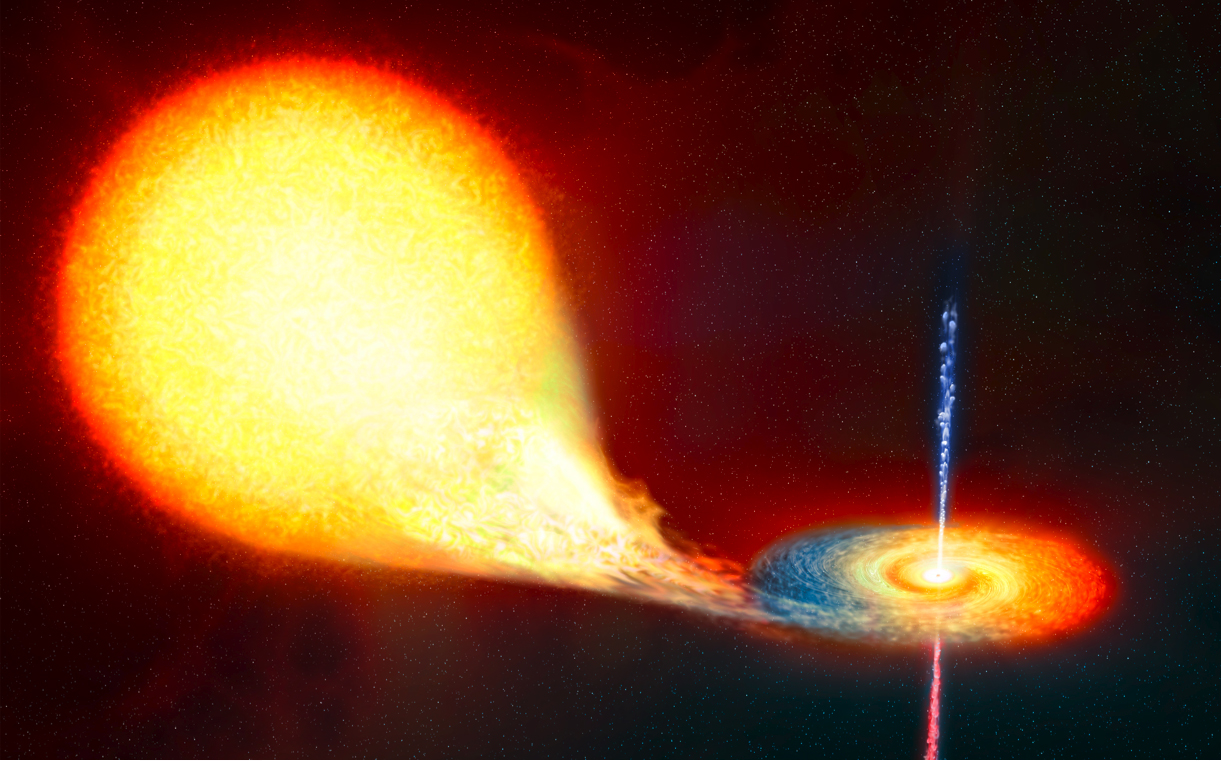 |
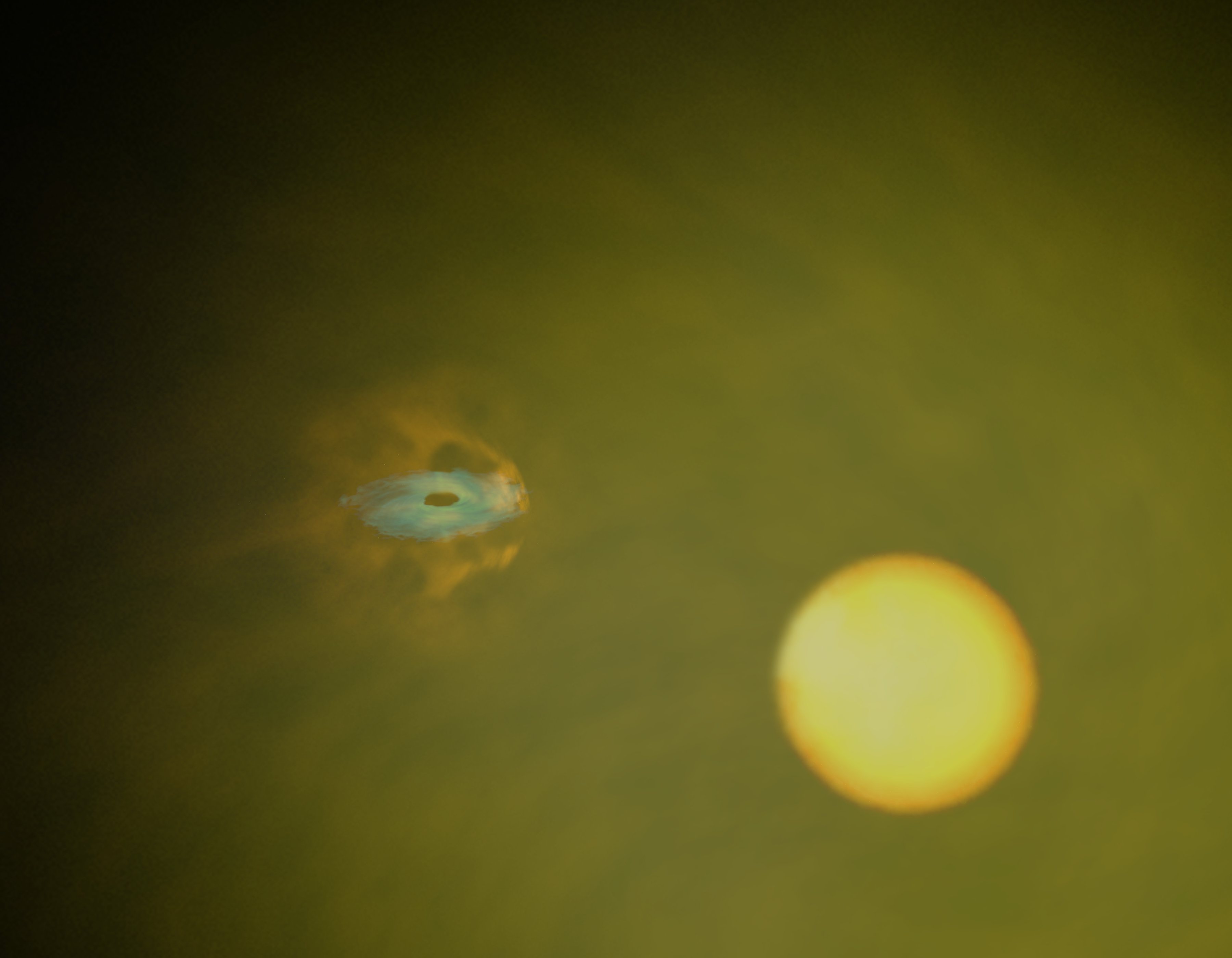 |
Deeply Obscured SourcesINTEGRAL has detected a class of highly obscured sources which, due to the strong intrinsic absorption in these systems (NH>1023 cm-2), are hard to detect at low energies and thus escaped detection in previous surveys. The compact objects appear to be deeply buried in the stellar wind of supergiant companions. The detection of this source class has more than doubled the number of known High-Mass X-ray Binaries (HMXB) in the inner Galaxy. See Walter et al. (2003) for the prototypical source IGR J16318-4848. |
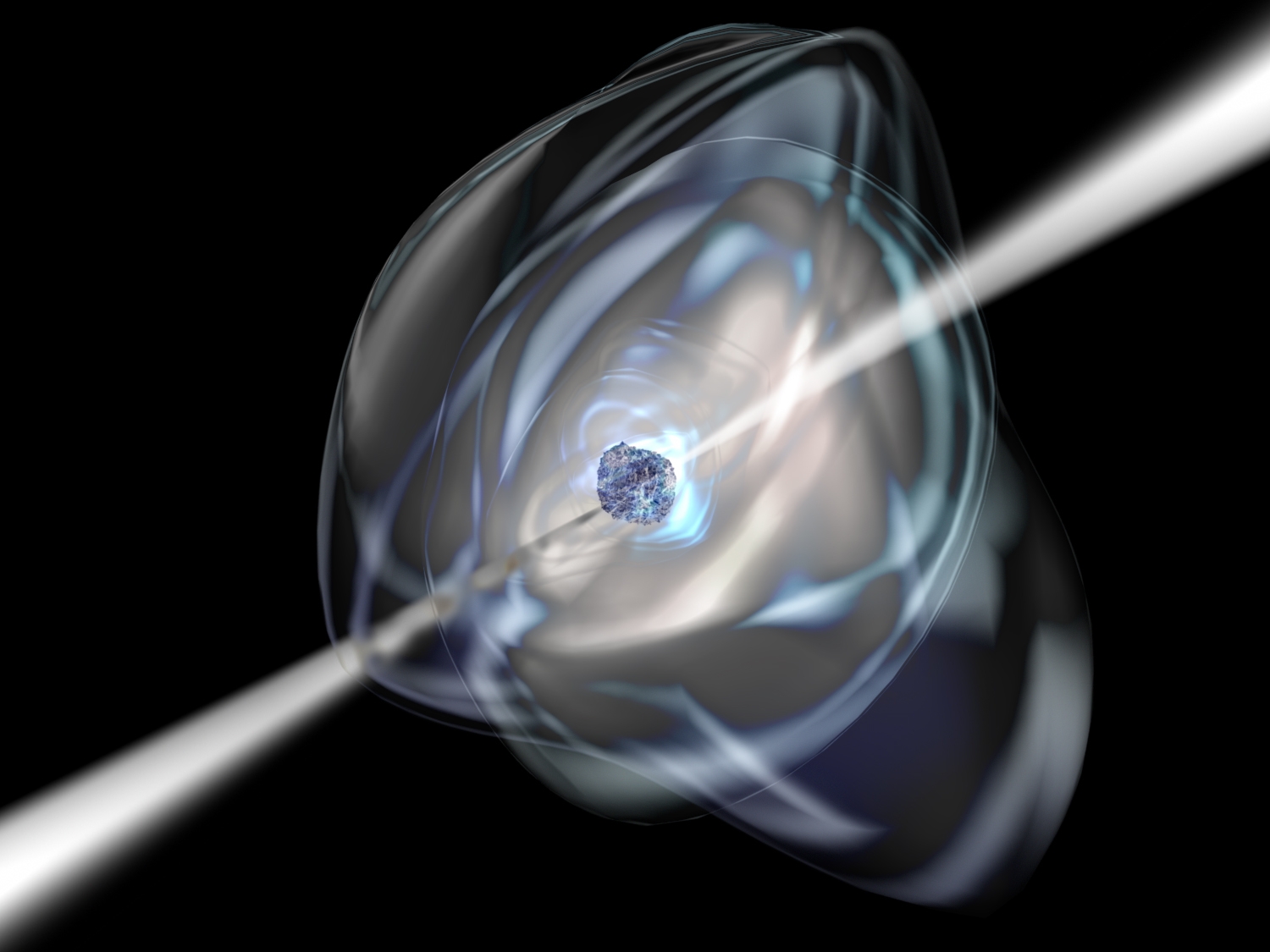 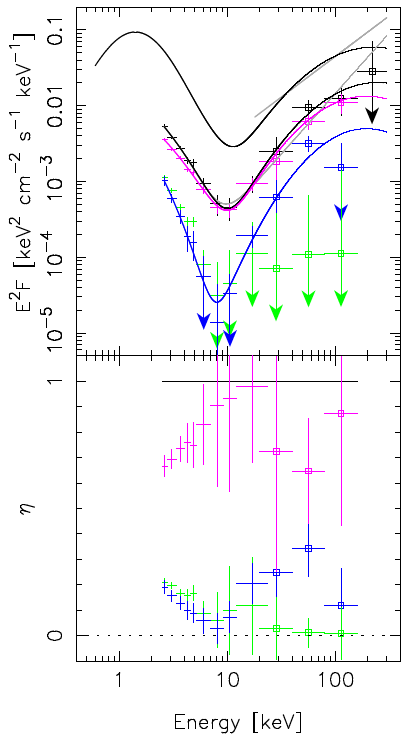 |
MagnetarsSoft Gamma-Ray Repeaters and Anomalous X-ray Pulsars are two different classes of isolated neutron stars, which nowadays are both considered to be magnetars, powered by the decay of extremely powerful magnetic fields. They were known as X-ray emitters, but with soft, thermal spectra, dwindling below detectability above ~10 keV. Surprisingly, INTEGRAL has found that these sources emit large amounts of gamma-ray radiation in the form of very hard power law tails, sometimes exceeding the energy output in the classical X-ray range. See, e.g., Den Hartog et al. (2008). |
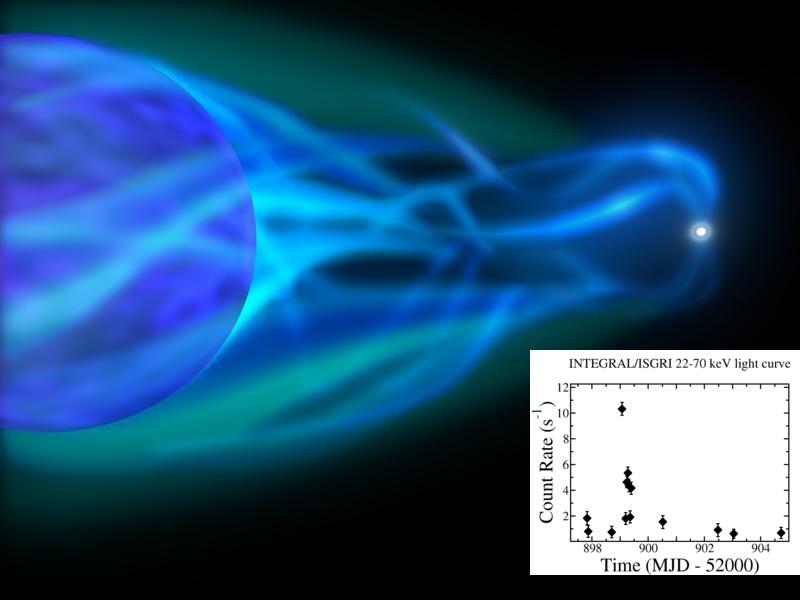 |
Supergiant Fast X-ray TransientsAnother class of high-mass X-ray binaries revealed by INTEGRAL are the Supergiant Fast X-ray Transients which can flare up and fade to quiescence again within timescales of hours instead of days (e.g., Negueruela et al. 2006, Sguera et al. 2006). The explanation of the properties of these systems and their relation to the other well-known classes remains a subject of lively debate – see, e.g. Sidoli et al. (2007) or Blay et al. (2008). |
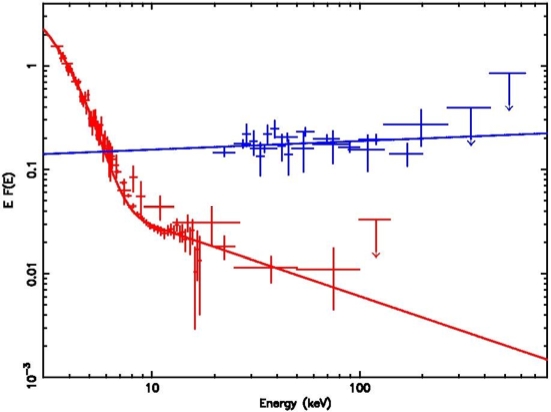 |
X-ray NovaeTransient Black Hole Candidate systems, or X-ray Novae, are highly interesting objects for INTEGRAL to observe. Its wide energy range allows to follow the often dramatic changes in spectral shape over the evolution of the outburst and to observe the hard component up to several 100 keV or even to the MeV range. INTEGRAL has followed various outbursts of such systems, e.g., GRO J1655-40 (also Joinet et al. 2008), SWIFT J1753.5-0127 (Cadolle Bel at al. 2007), XTE J1720-318, H1743-322 and more. In addition to the known systems, INTEGRAL is also detecting new sources of this class. |
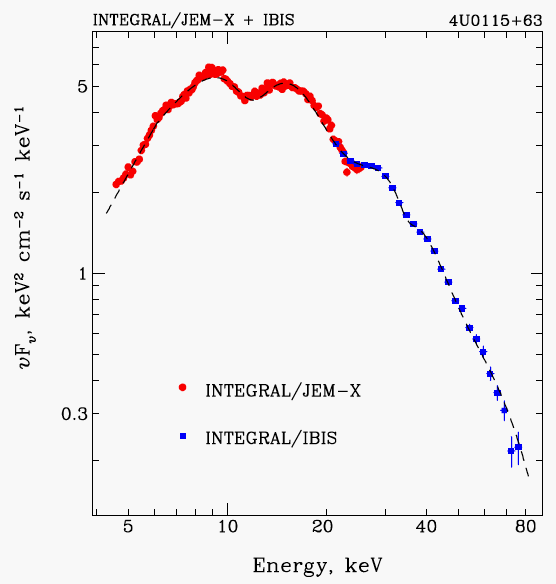 |
Cyclotron line studiesGiven the high energy resolution of its main instruments, INTEGRAL has permitted studies of cyclotron resonance scattering features with unprecedented resolution for several persistent and transient pulsars, like 4U 0115+63 (Tsygankov et al. 2007), V 0332+53 (Kreykenbohm et al. 2005) or A 0535+26 (Caballero et al. 2007). These observations are also used for comparison with detailed physical models of cyclotron line features, e.g., Schönherr et al. (2007). |
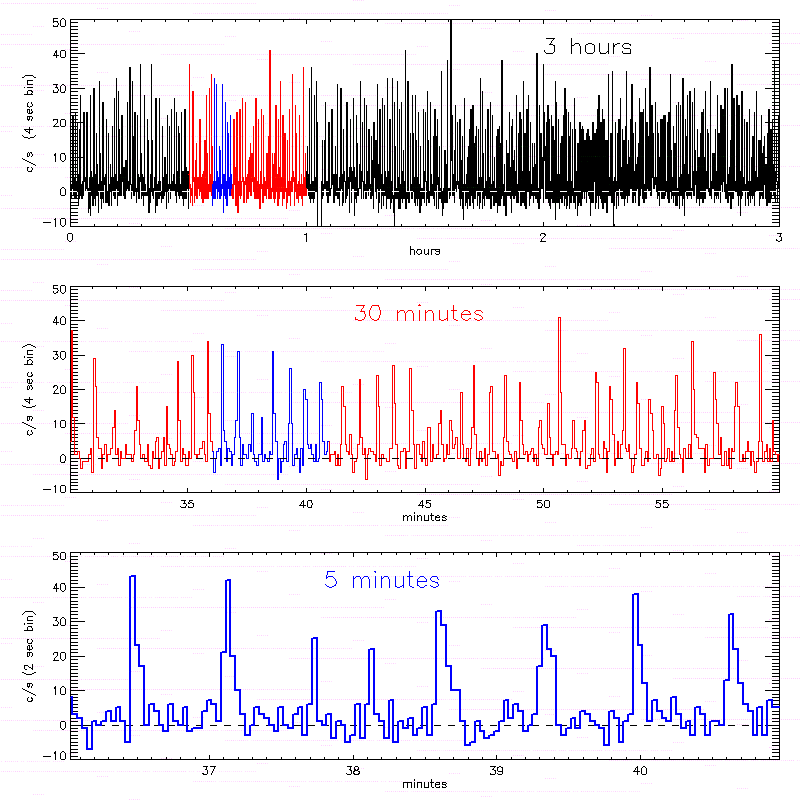 |
X-ray burstsDue to its wide field-of-view and regular monitoring of the Galactic Plane and Centre, INTEGRAL frequently captures X-ray bursts from known or new X-ray bursters. An extreme example of such a source is MXB 1730-335, better known as "Rapid Burster". During an observation of the source region in March 2008 the source let off more than a burst per minute. |
Optical variabilityThe OMC monitors the optical emission of known high-energy sources in the field as well as that of known variable stars. Sometimes high-energy sources are also regularly varying at optical wavelengths. One example is the well-known accreting X-ray pulsar Her X-1. |
